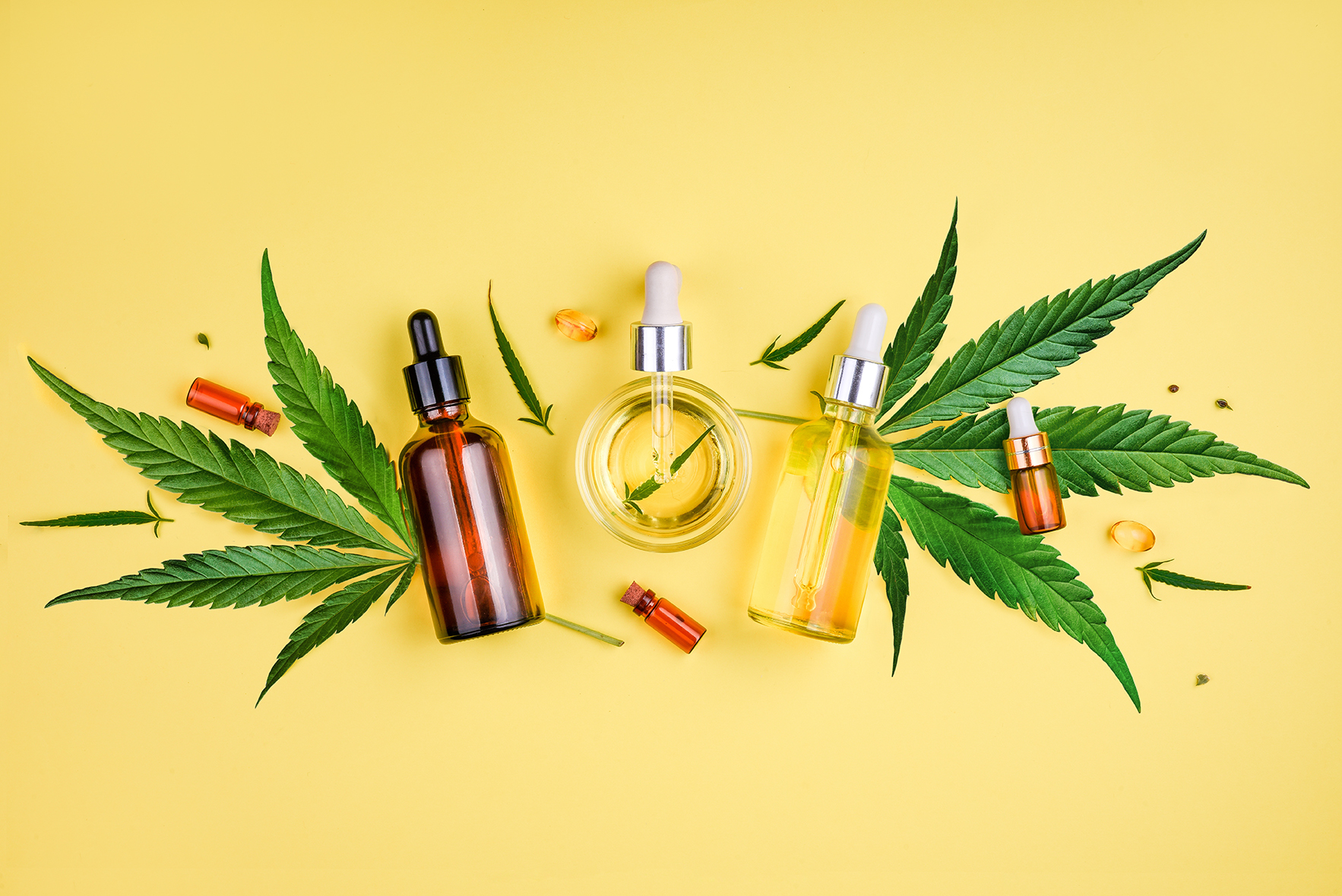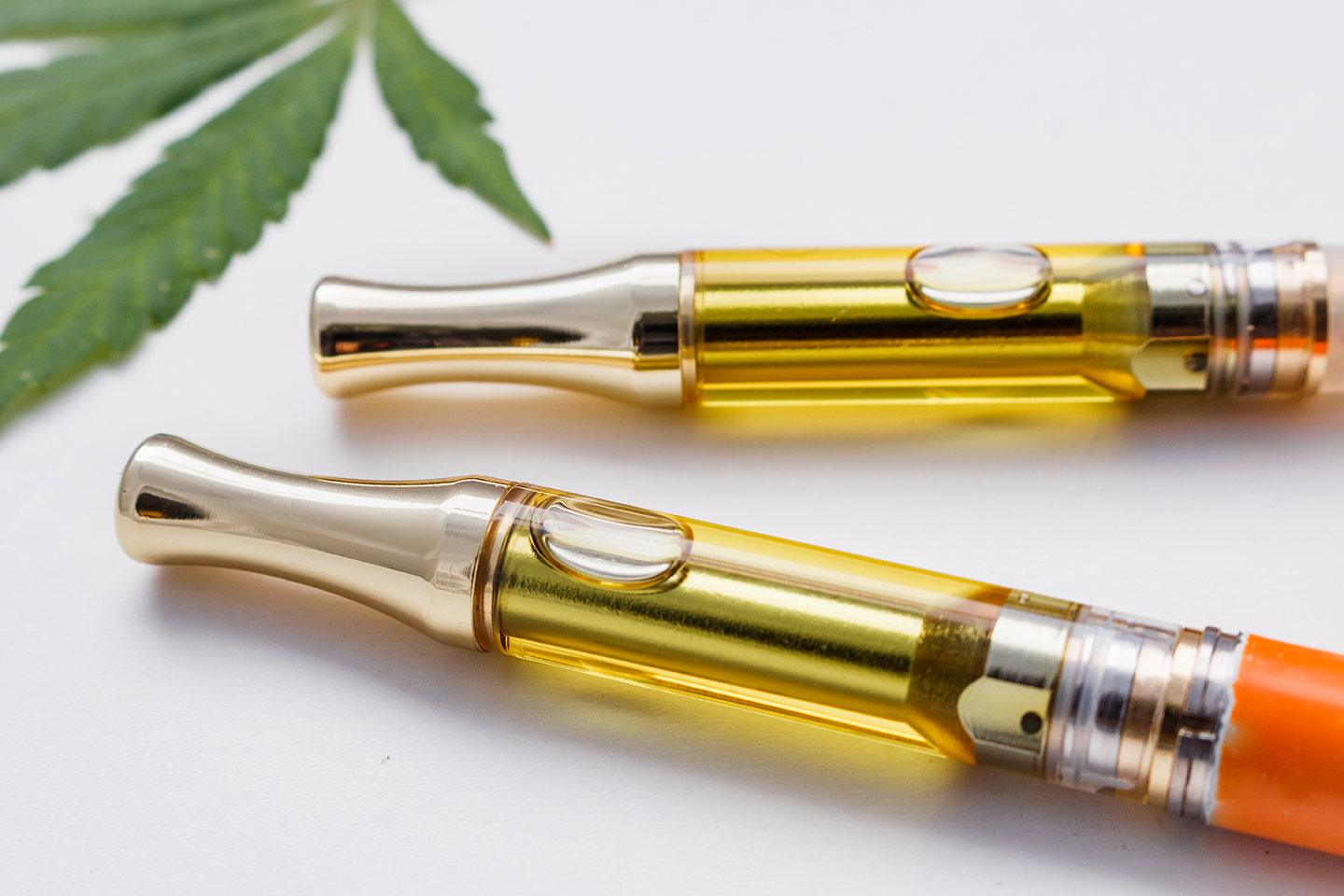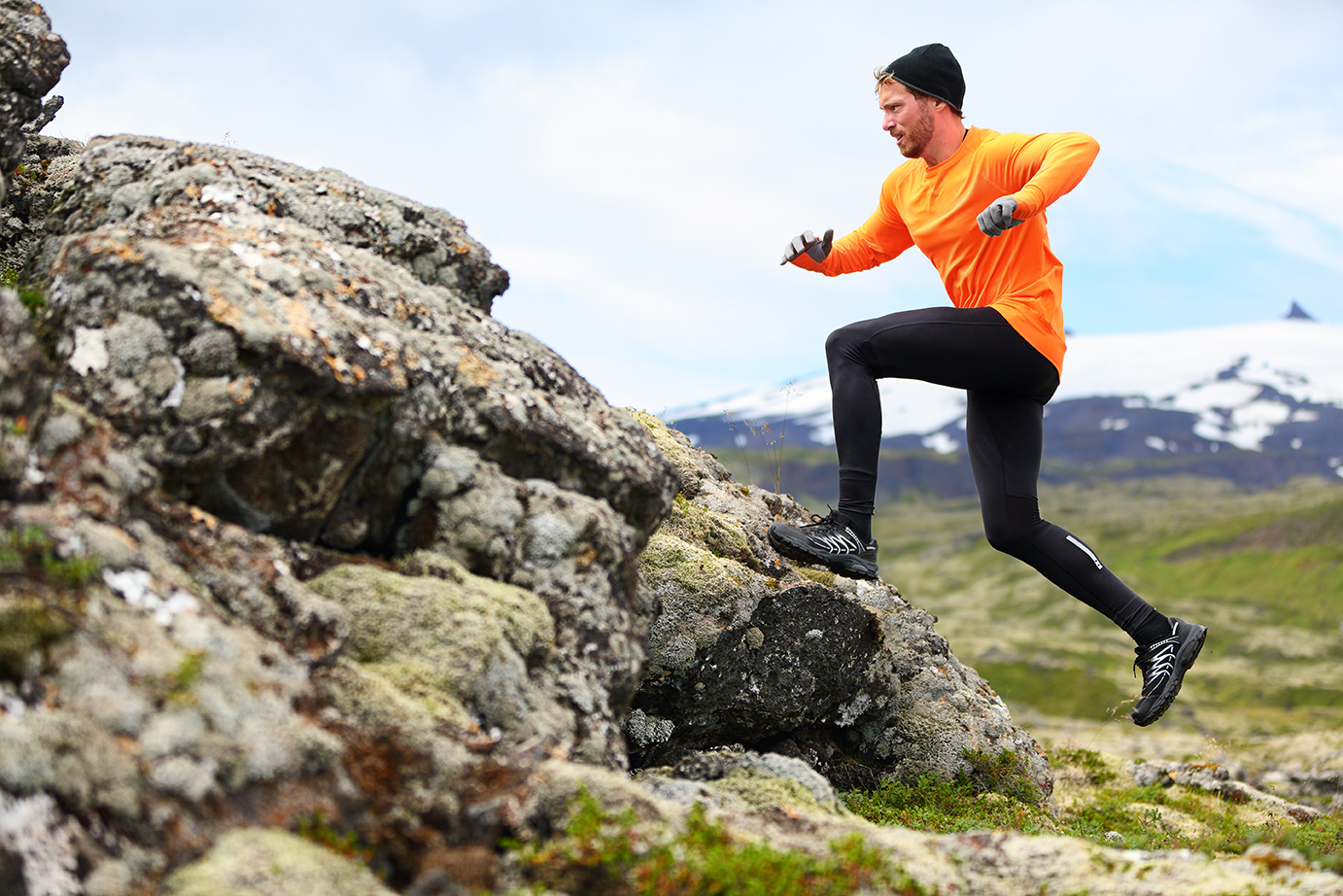CBD FAQ
There's a lot of buzz surrounding CBD and cannabis — but separating the facts from the fake news can be tricky. Here are 20 mysteries and misconceptions worth clearing up.

Indica, sativa—what’s the diff?
Less than you think. Marketers like the words because they offer simple guidance through the thicket of products out there. You know the dorm-room lore: Sativa lifts you up; indica calms you down. Once upon a time, that was true, but the consensus among botanists, growers, and scientists now is that the difference is overblown.
“
The idea behind it isn’t made up,” says Tristan Watkins, Ph.D., chief scientific officer of Lucid Mood, a Colorado maker of vape pens. Cannabis indica is a compact plant, with dark, wide leaves, and a stronger aroma; Cannabis sativa is taller, with narrower leaves, and a lighter color and smell.
Sativa became known as the party choice, with a heady, creative high. Indica was the homebody, leaving you happy “in da couch” because it has a higher ratio of CBD acting as a governor over the psychoactive THC. But with cross-breeding, practically everything is a hybrid now. You’ll see cultivars (the word “strains” makes botanists wince) advertised with percentages, like a “sativa-dom” that’s supposedly 70 percent sativa and 30 percent indica—perfect for a Radiohead concert, your budtender might say.
Problem is, there are countless chemicals in marijuana, cannabinoids (besides THC and CBD) and terpenes by the score, all of which work together to produce different effects. How it was grown, how it’s ingested, your mood, your setting, all of this combines to produce a distinctive high. And your high is different than your buddy’s.
In short, it’s complicated. Don’t sneer at the cheerfully confident budtender at the dispensary. The sativa-indica distinction “is a great place to start,” says Watkins. “It’s an indication of how they may think or hope it will make you feel, but it’s a crapshoot.” It’ll take a few tries to find what you want. Keep a log (really!) of the labeling, percentages and effects. Remember the brand name, but don’t worry about the botanical name.
I get paranoid every time I go through an airport with edibles or vape pens in my suitcase. Should I be?
Here’s the calming consensus: Relax. All of the industry experts we’ve talked to—frequent-flying purveyors and users of a variety of cannabis products—have had zero problems with TSA X-rays, gloved inspectors, or sniffing dogs. They avoid carrying skunky flower in their carry-on because why risk it?
But CBD products are legal, vape pens look like innocuous nicotine pens, edibles look like candy, and really, those dogs are sniffing for bombs, not weed. If you’re really nervous, put it in your checked bag. Exception: International travel. Not that you’ll get nabbed, but it ain’t worth it. Leave it at home.
What is the entourage effect? Is it real?
Yes! But it’s slippery to explain. (Metaphor alert!) It’s literally team chemistry—like the magical combination of NBA stars and role players that produces championships. You know about the highs of THC (Steph Curry) and the power of CBD (Kevin Durant), but what makes the team great are the other elements—scores of terpenes (Klay Thompson…oh, you get it) and cannabinoids that provide countless variations producing a range of effects. Sometimes it’s unexpected synergy (congrats, Raptors).
As Chirag Sandana, founder of Spectrum Brands (that’s Cobra Extracts), says, “it’s not just one terpene, it’s the ratio and combination of multiple terpenes that causes the effects.” As Tristan Watkins of Lucid Mood puts it, “The idea is that you can deliver more than one compound that hits more than one area of the brain. The effects that can be created can be unexpected or greater than their constituent parts. It’s this idea of one plus one equals three.”
See Also What are Terpenes?
So it’s chemistry and math! With so many compounds and molecules to be tried, “Those doors are just starting to open up now,” Sandana says. “NIH is allowed to look at these things. We’ll learn a lot more in these next few years.”

I tweaked my knee in a basketball game. What cannabis product will get me back on the court?
Left knee? Sativa salve. Right knee? Indica ointment. We’re kidding! But listening to doctors and patients and researchers and sellers, you’d think anything is possible. What we do know: CBD is an anti-inflammatory and antioxidant, and THC is an analgesic (a pain reliever) that’s far more powerful than aspirin or hydrocortisone in managing inflammation, says Joseph Rosado, M.D., director of a cannabis clinic in Florida. And if a cannabis product keeps you off opiates, all the better.
Using CBD and THC in concert reduces side effects and shows more benefits than THC alone, so look for products with a high CBD to THC ratio. A high-CBD, low-THC product could reduce pain while keeping you mentally sharp. If taking your mind off the pain is your goal, look for more THC. More specifically, look for the terpenes myrcene or caryophyllene, which are all-stars in managing pain.
See Also CBD For Sports Injuries
So are you supposed to rub a CBD salve on your knee, use an under-the-tongue tincture, eat a gummy, or vape some oil? That’s your call, but a salve rubbed on the joint can work directly on the receptors in the area. CBD has worked on arthritic rats, big time. Why not you? Check with your doctor before trying anything. But you knew that. And when you start, remember: Low and slow. Start with a low dose, listen to your body, and work your way up as needed.
True or False? Cannabis is especially dangerous to teenagers’ minds.
True, with a study-based explanation. We—that is, experts we’ve consulted—are not saying that teenagers vaping weed are going to become addicted, move on to hard drugs, or develop psychosis. All are outcomes that have been asserted over the decades. But we/they must acknowledge that there’s a lot we don’t know about how external factors affect their developing brains (like Fortnite, for starters) and a lot about cannabis that still isn’t understood (new cultivars, higher potency, those hundreds of dimly-understood chemical compounds, plus—yikes!—potential effects of dabbing concentrates). That adds up to a big lack of understanding.
Your best move: Ignore the hysteria but keep the science in mind. And right now that science says that brains aren’t mature until age 25, and that chronic use of THC messes with neural pathways that are still being paved. That can affect learning, memory, and attention span, and weaken impulse control, according to several studies. So keep an eye on the kids. It can wait.
Will my prescriptions interact with CBD?
Probably. So check with your doctor, OK? We’re not doctors, but we will tell you this: CBD and all of your prescription drugs are broken down by your body the same way: Enzymes attack and release the active ingredients into your bloodstream. The only problem: There are limited amounts of said enzymes, so adding CBD to your treatment regimens can be thrown out of whack. If the CBD gloms onto all the enzymes, your drug may not be metabolized at all.
See Also Does CBD Interact WIth Other Medications?
And if they aren’t metabolized, they may build up in your body and ramp up side effects or even produce an overdose. Scary enough yet? The list of drugs competing with CBD for those enzymes includes antibiotics, antidepressants, and many painkillers. If you’re on CBD, your doctor needs to hear about it, STAT.
My mother needs something for anxiety. But I don’t want her getting any foggier. Is there a CBD product to help? And how do I talk her into it?
Lesson one: Don’t push it. “If mom’s against it, you’re not going to convince her,” says Joseph Rosado, who treats many seniors in his cannabis clinic in Florida. That’s why you want to work the non-intoxicating side of the ledger, which means a full-spectrum CBD oil that contains all of the cannabinoids known to ease anxiety, “and an itty-bitty amount of THC,” between 0.3% and 7%. Just enough, in fact, to help CBD do its job, but not enough that mom will go loopy, or freak out.
“With people with no experience, we recommend sublingual oil or a capsule. Start with a low dose and titrate up” to what works best, Rosado says. (Sublingual means a dropper below the tongue.) Don’t get scientific, advises Tristan Watkins, Ph.D., of Lucid Mood, who convinced his mother in Florida to try it. He showed her Sanjay Gupta’s story on CNN about cannabis (Google it), which opened her eyes. Tell her: You don’t have to smoke; you won’t get high; it’s less sedating than wine; it’s been studied and is legal!
See Also Can CBD Be Used for Anxiety?
“It’s such low risk for potentially high reward,” Watkins said. “If she doesn’t like it, she can easily stop using it.”
Will vaping cannabis turn my teeth brown?
Four out of five dentists we checked with said you should be OK, with some precautions. The fifth one was out golfing. Dentists hate the vaping of tobacco, though not as much as the smoking of the stuff. Smoke contains tar and ash that definitely stains teeth. Vaporizing doesn’t produce smoke, but the propylene glycol used as a thinning agent in cannabis oils (and nicotine products) isn’t entirely harmless, says Andrew Junkin, DDS, a dentist in suburban Philadelphia. Flavorings and glycerin can make bacteria stick to teeth, increasing the risk of cavities and staining. If you’re worried, a brush or rinse could help the enamel repair and reduce staining. Which is nice because you’ll probably be smiling.
I’m having my hip replaced. What cannabis product will help with the post-op pain?
Listening to some doctors and patients and sellers, you’d think anything is possible. What we do know: CBD is an anti-inflammatory and antioxidant, and THC is an analgesic (a pain reliever). And if a cannabis product keeps you off opiates, all the better. Using CBD and THC in concert reduces side effects and shows more benefits than THC alone, says Joseph Rosado, M.D., director of a cannabis clinic in Florida. More specifically, he says, look for the terpenes myrcene or caryophyllene, which are all-stars in managing pain. Rosado says a high-CBD, low-THC product could reduce pain while keeping you mentally sharp. If taking your mind off the pain is your goal, look for more THC. Ralph Hawkins, a 61-year-old man from Georgia who had a knee replacement, says it took him just four days with a CBD tincture to wean himself off Percocet. “I’m totally convinced it had a big-time transitional effect,” he says. You can also rub a salve on the knee—it can work directly on nerve receptors there. So give it a shot, but check with your doctor first. And when you start, remember: Low and slow. Start with a low dose, listen to your body, and work your way up as needed.
Confession: I don’t know how to inhale. So how do I do it?
President Clinton wasn’t the only one who faked inhaling. It’s not a natural thing. As a beginner, try the mouth-to-lung technique. Pull the vapor into your mouth, as though sucking on a straw, and hold it briefly. Then slowly inhale the vapor into your lungs. It may not provide as quick a buzz as the direct method, but hey, you’re a beginner. As time goes on, try the more direct method, where you inhale deeply from the get-go, inflating your lungs as you suck. As with anything, you’ll want to practice.
Does cannabis lube improve sex? How?
We’re pretty sure it does, but wouldn’t it be fun to find out for yourself? Based on some enjoyable reading of online testimonials, it’s worth a shot. This is known: CBD and THC dilate blood vessels, which helps promote natural lubrication. Another anecdotal-but-logical plus: CBD can be relaxing, which helps with arousal. (It can take 30 minutes, though.)
And this is proven by sex researchers: Relaxation is crucial to female orgasm. Formal research into the effectiveness doesn’t exist yet, but here’s a survey result from an industry group: 96% of people are unaware of CBD’s bedroom potential. You’re already in the top 4%! And of those who actually used any CBD products for sex, nearly two in three said it was very or extremely effective. Now start researching!
Is there anywhere I shouldn’t rub a salve?
Yes. Your eyes and any open wounds. That’s it. If you’re asking with a wink and nudge, see the lube question above.
Is cannabis safe when pregnant or breastfeeding?
The simple answer is no. Studies have shown that THC crosses the placenta and passes through breast milk, leading to a range of potential impairments in motor skills, problem-solving, and visual development. There’s less research on CBD, but the American College of Obstetrics and Gynecology advises against using it. This includes avoiding topical products, such as CBD-infused balms and cosmetics.
See Also Is CBD Safe to Use During Pregnancy?
Will weed make me sterile?
Stow the peace pipe and grab your jewels, fellas, because your little swimmers are delicate creatures. Studies have shown that smoking marijuana lowers sperm count. But as with everything cannabis-related, there are crossing indications, which can lead to crossed eyes when you try to work it all out. So while THC may lower your odds of getting your gal pregnant, other studies suggest that CBD may activate the endocannabinoid system in ways that invigorate your sperm. Either way, let the inhaler beware.

What are the rules in my sport?
The World Anti-Doping Agency last year removed CBD from its list of banned substances, which opened the door for triathletes, cyclists, runners, and other athletes to use it – provided it’s not banned by their regional bodies or race regulations. That means you’re likely in the clear to use CBD before your local 5K or criterium. But watch out, college and pro athletes. The NCAA doesn’t specifically outlaw CBD, but its THC testing threshold of 35 nanograms per milliliter could be problematic for frequent users. The NFL and NBA currently ban CBD, while MLB and NHL do not.
See Also CBD Is Revolutionizing How Athletes Recover
Does CBD help my immune system?
Unknown. Some preliminary studies with mice suggest that CBD suppresses T cell function, weakening your response to illness and cancer. If you have existing immune conditions, consult your doctor before trying CBD.
Why does music sound so much better on cannabis?
It’s a matter of timing. And that’s why jazz musicians (including Satchmo himself) may have enjoyed it so much. Preliminary brain research shows that cannabis can slow down your perception of time, encouraging your monkey brain to slow down a bit and enjoy every note. Cannabis also has a heightening effect on the right-brain region, which handles auditory processing. And as if all that isn’t enough, cannabis enhances short-term memory, so you’re more “present” for the tunes.
Will my horse get high if I give him CBD?
No. Unless the manufacturer has been reckless with the product and it contains inappropriate amounts of THC, Seabiscuit won’t get the munchies or begin laughing uncontrollably. Nor will your dog or cat. Inspect any CBD pet product for a Certificate of Analysis (the COA is a BFD) validating a THC level under 0.3%. And if you’re growing cannabis, make sure Seabiscuit’s long neck can’t extend over the garden fence, where the grass may definitely be greener, and psychoactive.
Will consuming CBD cause me to fail a drug test?
Assuming your product’s manufacturer knows what it’s doing, most CBD products do not contain enough THC for it to be detected. By law, CBD should contain less than 0.3% THC, which means you’d have to consume more than 1,000 milligrams of CBD to get a positive drug test – the equivalent of wolfing down a few bottles of gummies. Most important: Check your product for a Certificate of Analysis (COA) showing that the manufacturer has verified THC levels through independent lab testing.
See Also To Pee or Not To Pee
Is CBD addictive?
There is no evidence to suggest that. However, reading a really smart magazine about cannabis may be habit-forming.